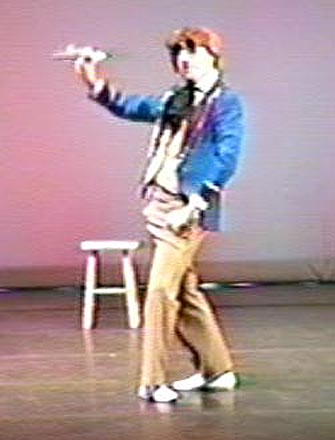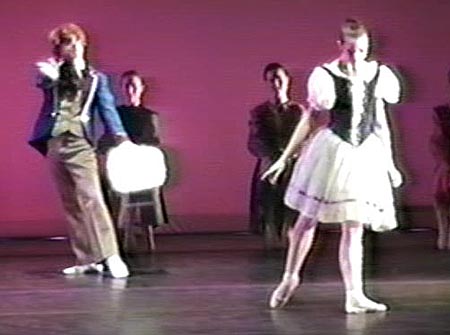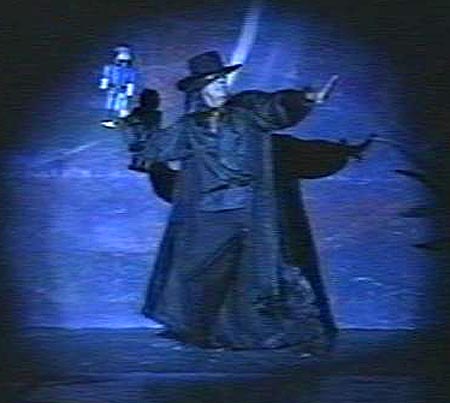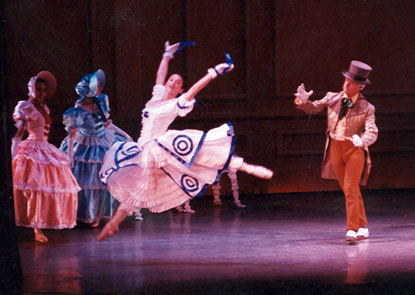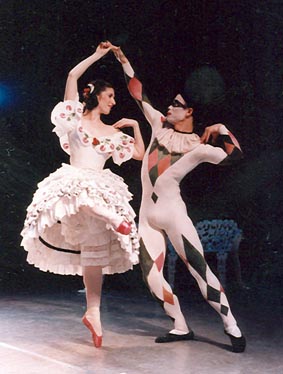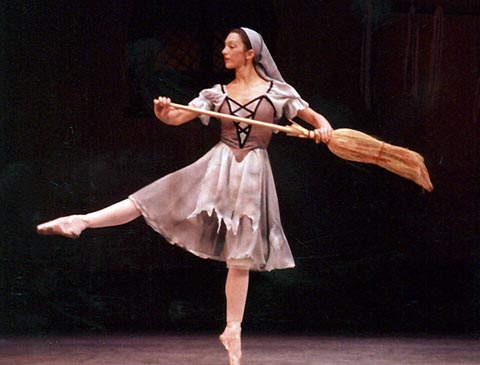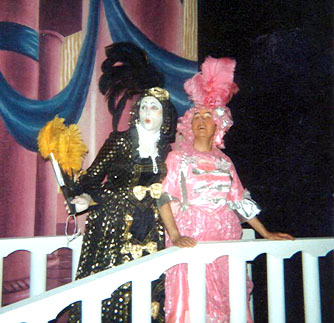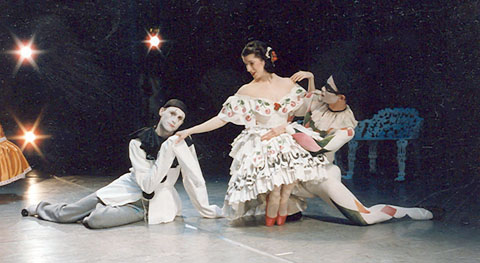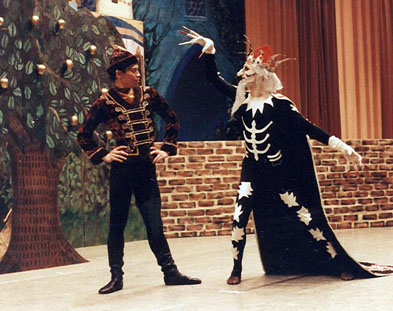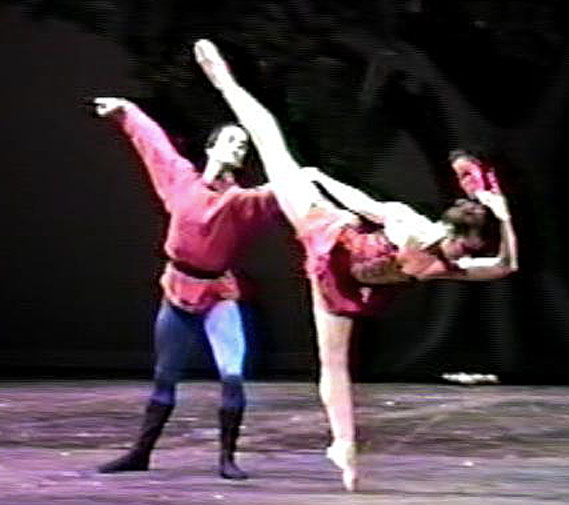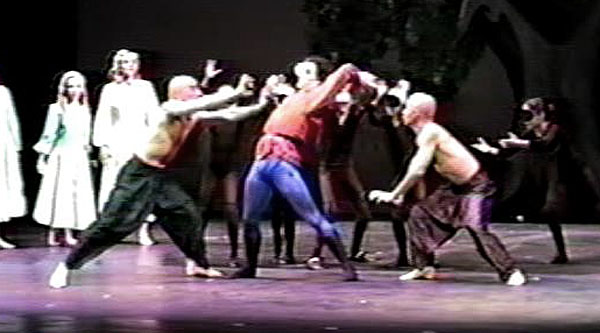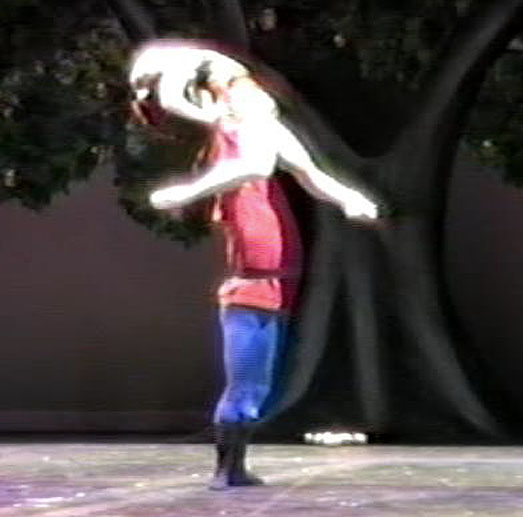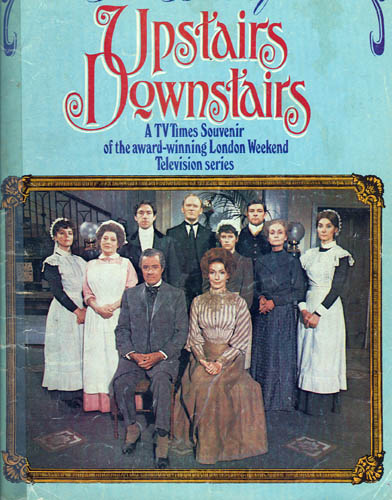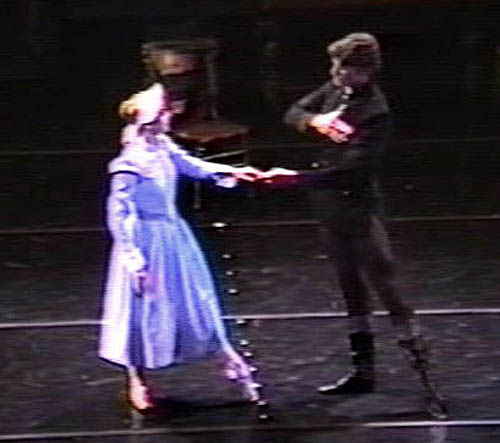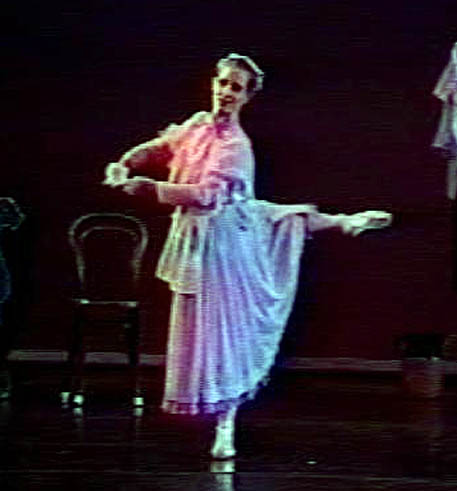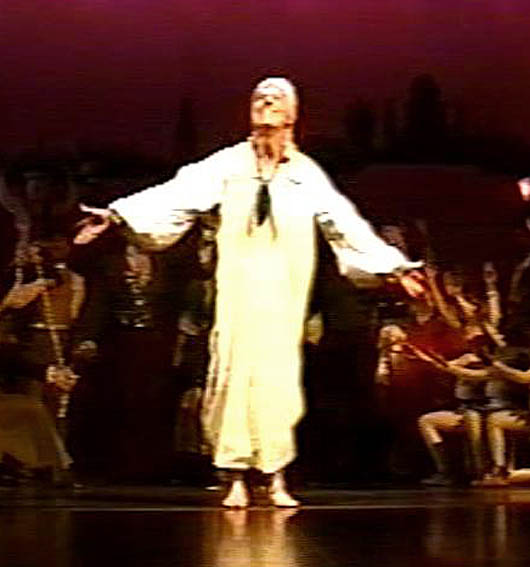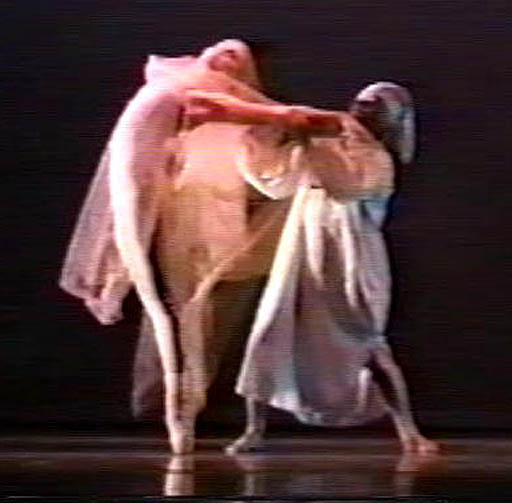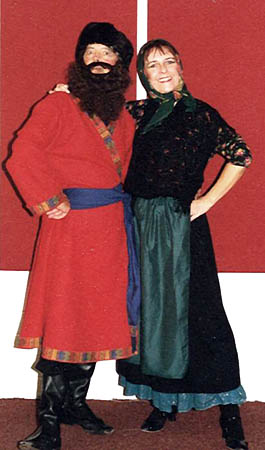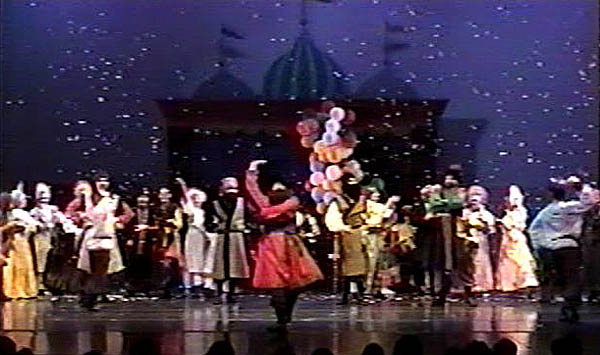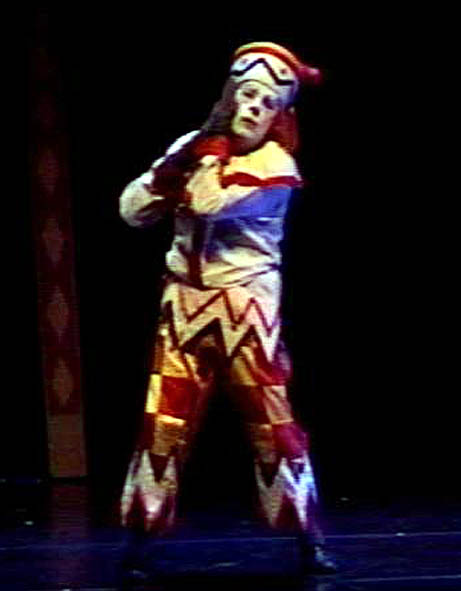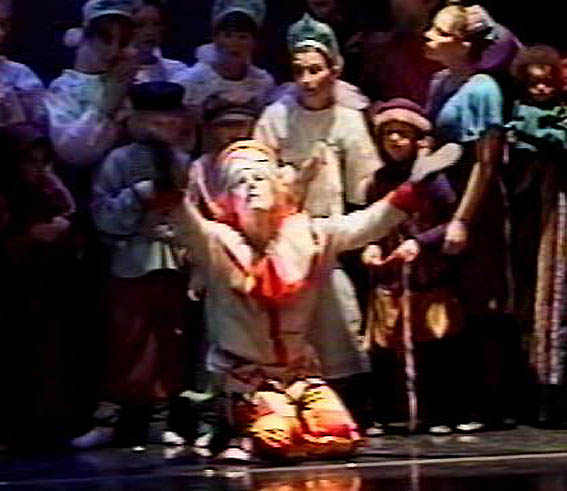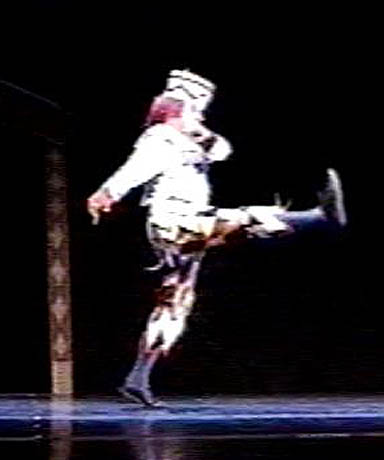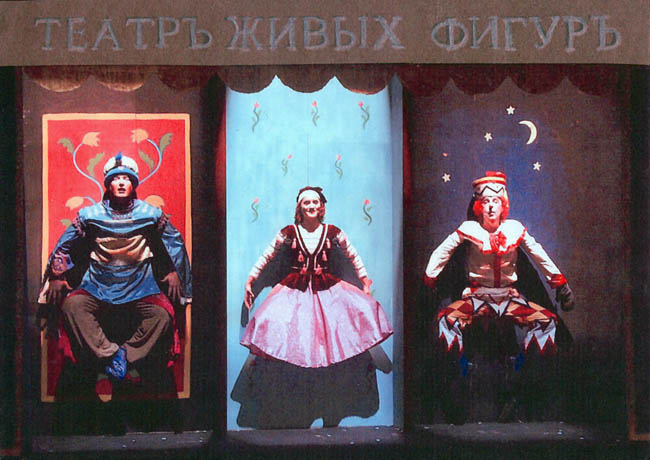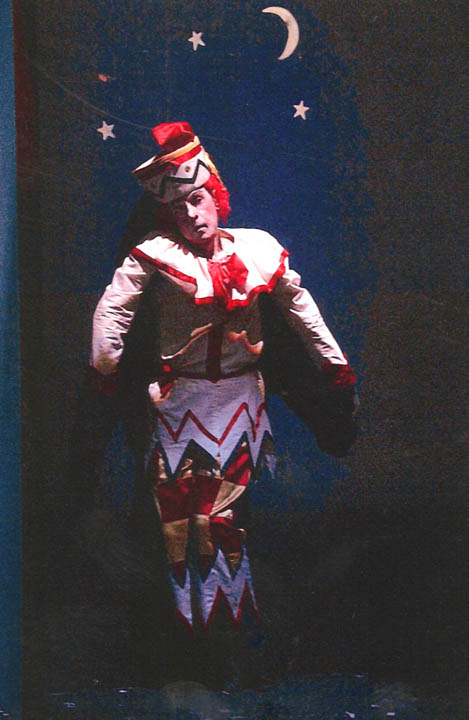CHAPTER 25
Dance In Tucson
Stephanie Stigers, who had danced with me in the Civic Ballet years
before, still had her intense visions but no longer was about to
produce a full-scale ballet about the Bolshevik revolution as she
once had tried to do.
I did manage to insert a comic dance of my own as Groucho Marx,
doing a tango in full get-up of false nose, horned rim glasses,
overgrown eyebrows and cigar. It got plenty of laughs at the first
rehearsal. Subsequent rehearsals went silent as by then they knew
all the jokes! All stand-up comics are familiar with that
bewildering experience.
I had already set “Humpbacked Horse” for her group.
Tucson Regional Ballet This ballet on Armenian themes would later become a kind of signature piece of mine and performed all over the country, with great audience appeal. Here in Tucson it served as just another vehicle for Linda’s students and with audiences made up of parents, relatives and friends whose attention was directed only at their own. It was not an artistic atmosphere.
Like every other dance school, not only in Tucson but also across
the country, Linda decided to do a “Nutcracker”. Ivan Nage once told
me that Nutcracker is like a disease. Every little town and hamlet
has a Nutcracker; often more than one. I never told her that my own
“Nutcracker” 1967-1972 was the very first in the entire State of
Arizona and had opened the downtown Convention Center Music Hall,
Tucson’s largest professional theater. Or that in A Southwest Nutcracker From my previous experience dancing in “A
Colonial Nutcracker”, I did venture to suggest, that it might be a
good idea to make her Nutcracker regional - “A Southwest
Nutcracker”, set in early Tucson of 1880s.. She did just that and it
became a tremendous success, continuing a regular feature at Tucson
Christmas time as a unique and appealing change from the
traditional..
Meanwhile, I was staging “Le Carnaval” and full-length “Cinderella” in New Jersey. Professional dancers from Manhattan were chosen for the lead roles. Traditionally, the two ugly sisters are played by men. During a dress rehearsal, one broke his ankle and had to drop out. I had to search for a replacement in a hurry. I was in Manhattan when I got this devastating news. Fortunately I was able to get one of New York Theater Ballet’s dancers and rehearsed him on the spot for the next day’s matinee. As he had to perform all night in a rock band he got no sleep but miraculously appeared in New Jersey the next day, a half hour before curtain. He took over the role perfectly, in fact, far better than the original dancer. That left the other role empty. There was no other solution than for me to step in and do it. It was my third appearance in a drag role, this time in pink! I vowed it would be my last.
Firebird in Tucson Although I had staged my “Firebird” several times for various companies, the first being for the New York Theater Ballet, I always felt the one I did for Tucson Regional Ballet was the best. This feeling was validated by Arnold Sphor (founder of the Royal Winnipeg Ballet in Canada) when he viewed it. He felt the larger cast; far bigger than the original cast of New York Theater Ballet, plus larger scenery and excellent dancers cast as the Firebird and Prince Ivan and leading monsters, was really something to show to other companies.
Upstairs, Downstairs Here was an opportunity to choreograph “Upstairs Downstairs” that I so long had in mind to do. I based it on the BBC award-winning TV series of the same name; the episode when King Edward the Seventh comes to dinner at the Bellamy household in 1910. I had no profound message. If anything, I wanted to evoke that Edwardian era in London life. The Bellamy residence was a house divided, by wealth. Upstairs, all was spacious elegance. Downstairs it was bare, scrubbed and crowded. I found the downstairs servants far more interesting from a dance viewpoint with more opportunity for a variety of dances.
For the entire household, entertaining King Edward for dinner was
the highlight of the age. “Upstairs Downstairs” was a blend of reality and stylization. I used care in fulfilling the particular characteristics of the individual roles but perhaps relied too much on the audience having seen the TV series. When I later re-staged it in Santa Barbara, California, one critic complained that it had no focus. He must have been blind. The main focus was Rose, the leading character. The ballet opens with Rose, it ends with Rose. everything is focused on Rose.
Rose has stayed on through thick and thin. During her ‘tea cup
variation’ [an entire variation danced while drinking a cup of tea]
she has a letter in her pocket from her one great love; who has just
been killed in the World War 1914-1918 then going on. Rose outlasts
them all. At the end, when I had all the characters freeze in poses,
Rose enters with her suitcase, kisses each one in turn – to the
chimes of Big Ben - and leaves the Bellamy household for good.
Dance Southwest For a company that she was starting, very much like the old Tucson Civic Ballet in form and function. I helped set for her a “Sleeping Beauty” - teaching all variations, and a revival of “Khatchaturiana” that was performed at the University. She did a beautiful ballet version of “A Christmas Carol” to Glazunov’s “The Seasons” music. In this I played Scrooge. It went on for several years during the holiday season. It recalled my life in England, dancing with Ballets Minerva on endless tours throughout the United Kingdom. Ballets Minerva also did “A Christmas Carol” to music by Smetana and Berlioz. Then being much younger, in that version I danced a ‘barrow boy’ selling hot potatoes with a demanding variation, and another role as ‘the young Scrooge’’.
Petrushka
The next time I saw it on the stage was when I was on the staff of
American Ballet Theater. This ABT production was staged by Fokine
himself in 1941 and kept intact by Dimitri Romanoff who had danced
in it. “Dima” and I became good friends. We sat together at
rehearsals and often talked about Petrushka. During every
performance I would stand in the wings and watch every detail.of the
choreography and study how the scenery, an exact reproduction of the
Benois design, was put together.
The role of Petrushka was danced by P.J. Mann
who had been on Broadway in “A Chorus Line” and had retired to
Tucson. She did it beautifully, though it could be easily seen by
the audience that it was a woman.
Of course, being a school production with students of Jane’s studio, the audience again was basically made up of parents, relatives and friends. The fascinating history of this ballet and the Diaghilev/Nijinsky era that it came from was beyond them. I thought it would be a good idea to have a pre-curtain talk about the ballet and its origins, which helped some, but basically they were there only to see their teen-age children. It was extremely doubtful if they had ever heard of Stravisnky, Diaghileff, Fokine, or Nijinsky, let alone Petrushka. The early 20th Century creative geniuses meant nothing to them. They did understand and laugh at the rude gestures I made, as Petrushka’s ghost, to the Showman at the end of the ballet, swinging from the top of the puppet theater. But the ballet mainly served only as a show-piece for their offspring and what mattered most was that their children should be seen downstage. I’m not saying Tucson audiences are ignorant, only that, other than their own children’s participation, amateur ballet, no matter how expert it may be, is low on their list of priorities.
A Post-Script On Petrushka Even though an immense amount of work went into producing this “Petrushka” and making it as authentic as possible, it was shown before audiences of know-nothings. I felt as a voice in the wilderness. True, there are other voices far stronger than mine that are unacknowledged. How dare I lift up my voice in the wilderness of the artistically unconscious? I am sure I am not moved by egotism or arrogance, but simply out of my deep love of dance. Our society promotes knowledge of commerce and sports but not the arts, and this is both regrettable and evident. At least I could be personally satisfied. My life-long dream of dancing Petrushka, even if at a late date in my life, had materialized. |
